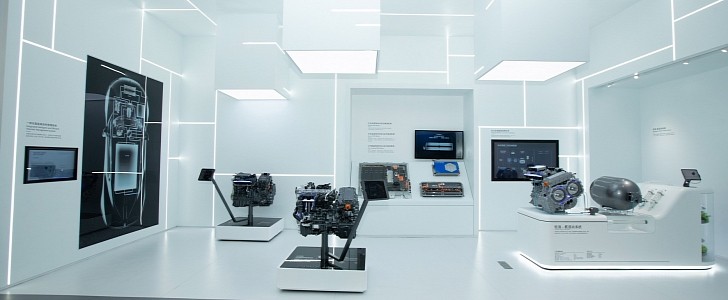The GAC Group held its Tech Day on June 28. Among the multiple things the Chinese carmaker presented, one really deserved our attention: the SmLFP technology. As you have probably already guessed, it has to do with lithium iron phosphate (LFP) cells: it increased their energy density by 20% – or so it seems.
GAC said that SmLFP consists of LFP batteries “built on microcrystalline technology,” which does not really explain what changed. Thanks to that mysterious solution, the SmLFP cells have “13.5% higher cell quality energy density and 20% greater volume energy density than regular mass-produced” LFP cells. We have no idea what the Chinese automaker means by “higher cell quality energy density.” Volume energy density refers to the proportion of Wh per liter instead of Wh per kg.
In March, SVolt disclosed that it was producing LFP cells with an energy density of 200 Wh/kg. If GAC’s LFP batteries are at the same level and the “higher cell quality energy density” refers to Wh/kg, the SmLFP cells could offer 227 Wh/kg. That’s on par with what Gotion High-Tech and SVolt said they could achieve: 230 Wh/kg.
GAC also said that these new SmLFP cells stand 2C of quick charge and have a lifespan of 1.5 million kilometers (932,056 miles). GAC also tweeted something else we cannot understand: “10% capacity at the -20°C low temperature.” Is it 10% more capacity in these conditions? Only 10% of its original capacity? We honestly don’t know, and Chinese companies, in general, are not reachable for comments. GAC is no exception.
Apart from the SmLFP cell and its “secrets,” GAC also disclosed a 1.5-liter hydrogen combustion engine that burns 0.84 kg of hydrogen every 100 km, a concept van called Space that may use this hydrogen engine, the ADiGO PILOT Intelligent Driving System (for autonomous vehicles), and the Psi Operating System. The most concrete innovation is the SmLFP cell. If only GAC were willing to solve our doubts about it…
In March, SVolt disclosed that it was producing LFP cells with an energy density of 200 Wh/kg. If GAC’s LFP batteries are at the same level and the “higher cell quality energy density” refers to Wh/kg, the SmLFP cells could offer 227 Wh/kg. That’s on par with what Gotion High-Tech and SVolt said they could achieve: 230 Wh/kg.
GAC also said that these new SmLFP cells stand 2C of quick charge and have a lifespan of 1.5 million kilometers (932,056 miles). GAC also tweeted something else we cannot understand: “10% capacity at the -20°C low temperature.” Is it 10% more capacity in these conditions? Only 10% of its original capacity? We honestly don’t know, and Chinese companies, in general, are not reachable for comments. GAC is no exception.
Apart from the SmLFP cell and its “secrets,” GAC also disclosed a 1.5-liter hydrogen combustion engine that burns 0.84 kg of hydrogen every 100 km, a concept van called Space that may use this hydrogen engine, the ADiGO PILOT Intelligent Driving System (for autonomous vehicles), and the Psi Operating System. The most concrete innovation is the SmLFP cell. If only GAC were willing to solve our doubts about it…
At GAC Tech Day 2022, GAC Group introduced its new-generation super iron lithium battery built on microcrystalline technology (SmLFP).
— GAC MOTOR (@GAC_MOTOR) June 29, 2022














